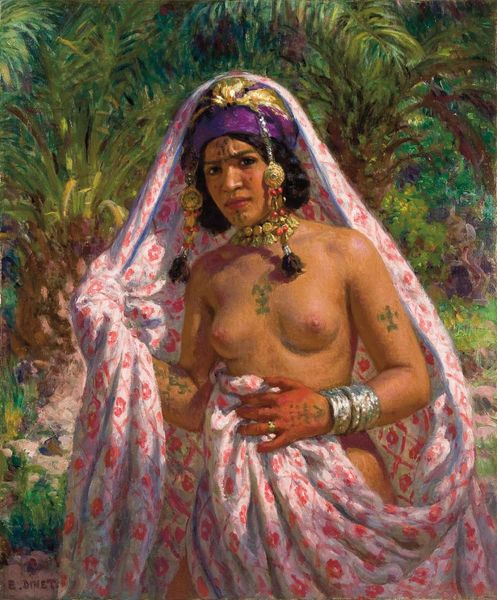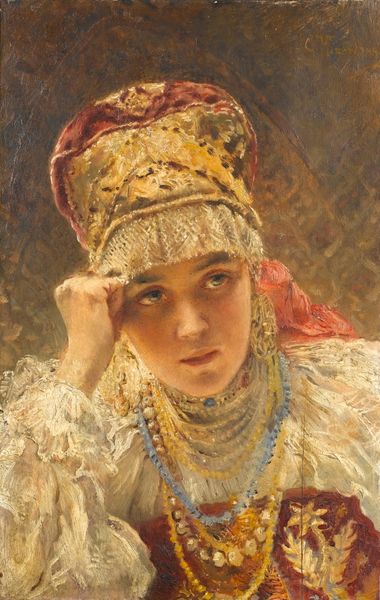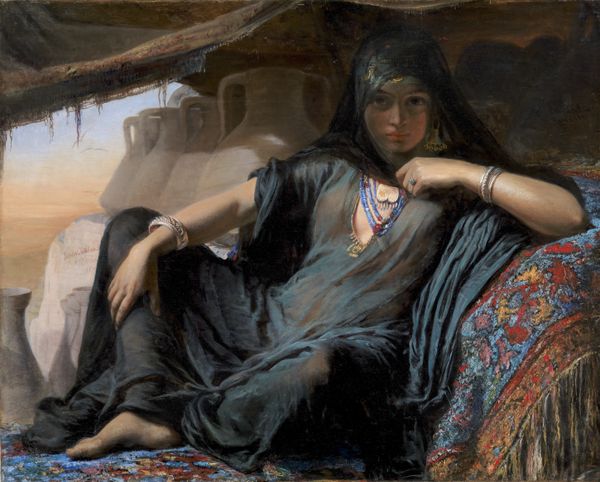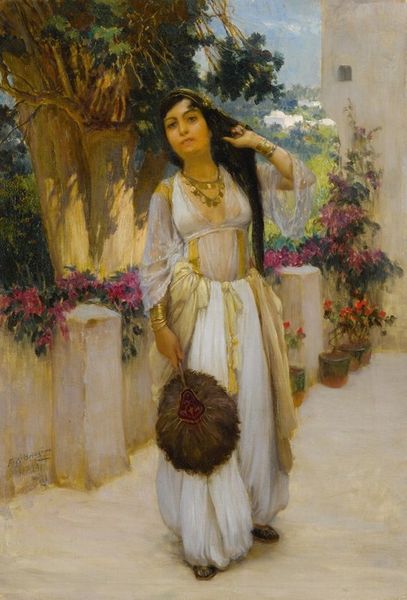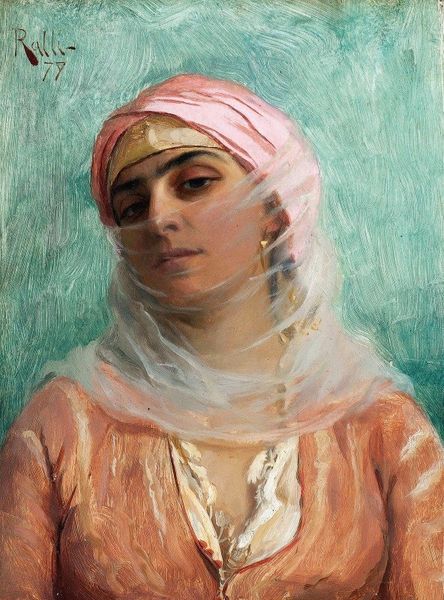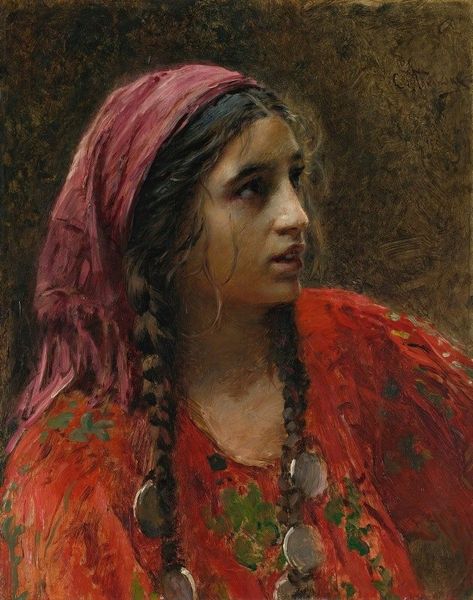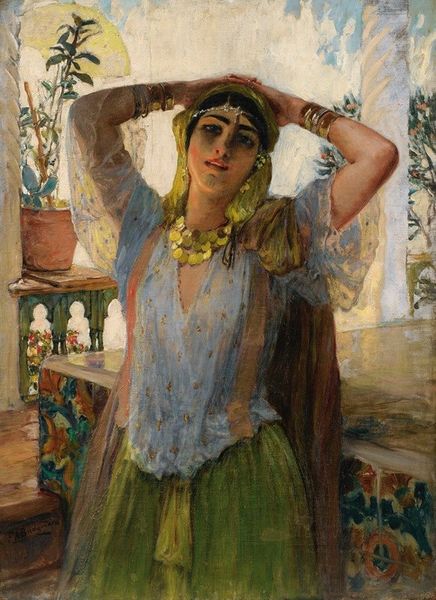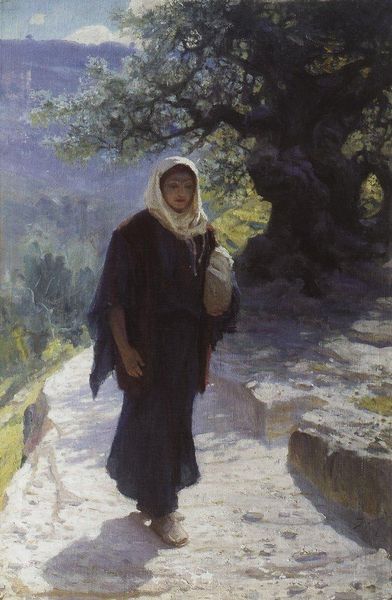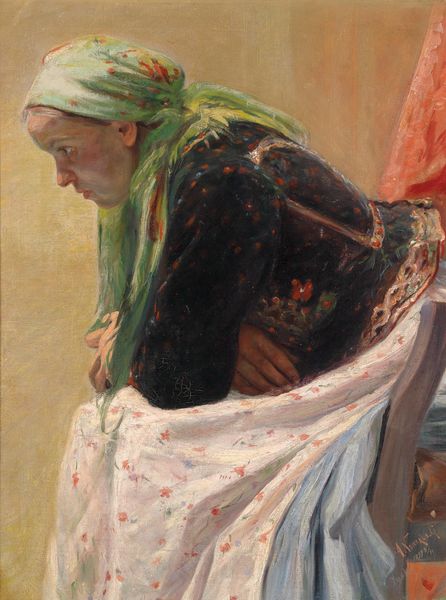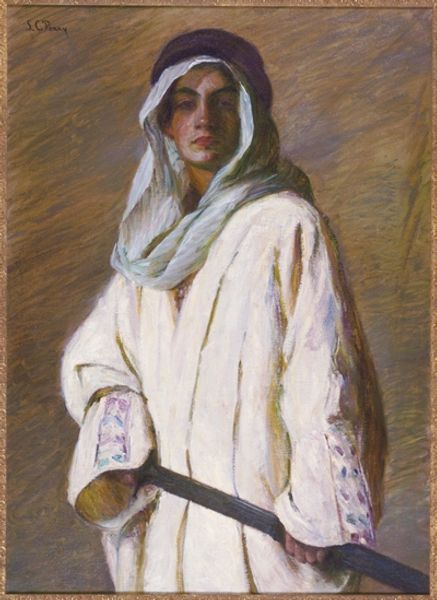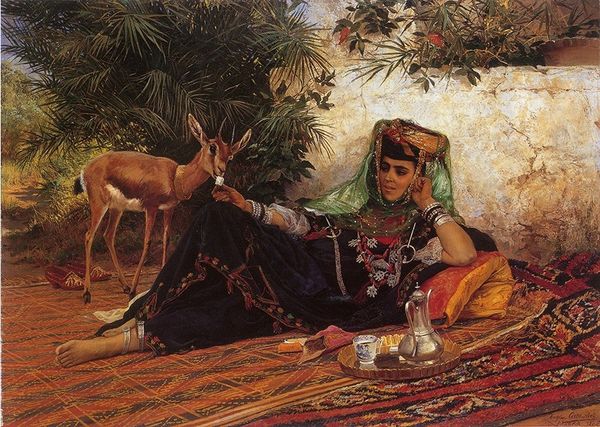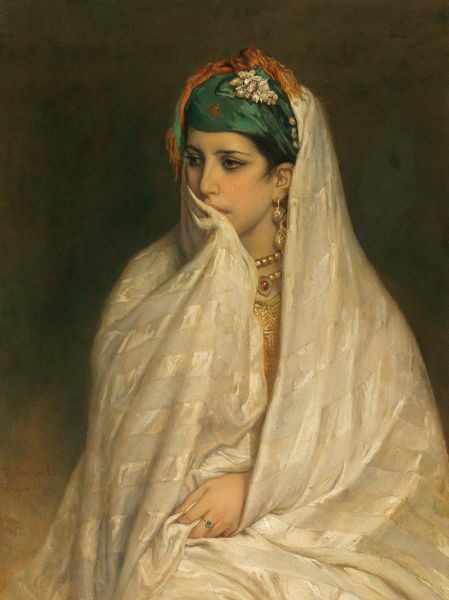
oil-paint
#
portrait
#
oil-paint
#
oil painting
#
orientalism
#
history-painting
#
realism
Copyright: Public domain
Editor: This is "Girl veiling herself," an oil painting by Nasreddine Dinet from 1901. I'm really drawn to how the texture of the veil almost obscures her face, creating a sense of mystery. What do you see in this piece, particularly thinking about how it was made? Curator: I'm fascinated by how Dinet, a European artist, chose to depict this woman and her relationship to the veil. Look closely at the detail in the silverwork and jewelry. How do you think the materials themselves – the pigment of the oil paint, the silver of her bracelets – contribute to the orientalist narrative? Editor: I hadn't really thought about the materials speaking to orientalism! It's like he's highlighting exotic "craftsmanship." I see what you mean. Curator: Exactly. He's not just painting a woman, he's carefully crafting an image steeped in perceived exoticism through his manipulation of material culture. The very act of representing her in oil paint, a traditionally Western medium, already frames her within a specific context. The texture of the veil achieved by layers of paint, mimicking a real fabric. Editor: That makes me think about the labour involved, too, and the Western gaze shaping the whole process. How his position influences the means of representing the scene. Curator: Precisely! He chooses the setting, the pose, the details of her adornment – each decision loaded with cultural significance and translated through his labor into this material object. The piece speaks less about the girl herself and more about European fantasies regarding the 'Orient' being made real through the application of paint and his artistic hand. What have you learned by inspecting the materiality and production here? Editor: I think I see it as a crafted performance, using real materials to manifest a constructed fantasy of another culture, a performance in which her agency seems limited, while his is expanded, as we consider labour in this portraiture. Thanks for bringing that to my attention. Curator: It's a perfect example of how understanding material processes allows us to unpack complex social and cultural dynamics in art.
Comments
No comments
Be the first to comment and join the conversation on the ultimate creative platform.
